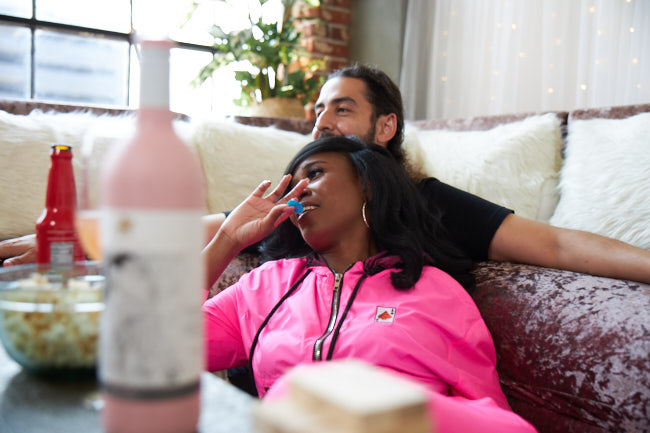February 15, 2022 by Taira Daniel from bu’kei agency
As a social media manager, perhaps you have created campaigns in the past for Black History Month, Women’s History Month or Pride, or posted about holidays recognizing marginalized groups of people.
That’s all a great start. These campaigns and posts suggest that your organization is aware of the issues and has internal buy-in to be vocal about your values and roles facing injustice.
Brands need to go beyond a one-time statement about diversity on social media. As social marketers, we should be integrating diversity, equity and inclusions into our social strategies for the long term. To do that successfully, we need to focus on both internal and external steps to ensure the efforts are authentic, sustainable, and helpful.
Here are five trends for success in social media and social equity
1. Brands Finally Get Community Right
As the tide of social media shifts away from glossy mega-influencers towards smaller and more authentic communities, brands that partner wisely with creators are connecting with audiences, earning their trust and gaining cultural capital.
Digital communities have never been richer, more vibrant, and more impactful on our experience of daily life than they are now. And nowhere are these communities being created – and catered to – more than on social media.
Over a billion Facebook users regularly engage within groups. On TikTok, plant fanatics, witches and rug aficionados are carving out their own spaces to share and develop their interests – no matter the obscure. Twitter has even started testing a feature called (wait for it…) Communities, “a dedicated place to connect, share and get closer to the discussion [people] care about most.”
Instead of trying to build a community from the ground up, the smartest brands in 2022 will tap into creator communities to learn more about customers, simplify content creation, and build brand awareness and affinity.
2. The Buying Power of Women
By 2028, women will own 75% of the discretionary spend, making them the world’s great influencers. When it comes to cannabis, women are more likely to switch to cannabis rather than pharmaceuticals to treat pain and other issues. Despite getting less support from physicians to try medical cannabis.
Of individuals in favor of recreational legalization, women are more likely than men to express interest in ingesting cannabis infused products if they’re in the form of baked goods, candies, cooking ingredients and non-alcoholic beverages.
And when you take age into consideration, the desire to consume marijuana infused products are more prevalent among millennial women.
The absolute best way to reach women is to create authentic content for women, by women, addressing their specific needs.
3. Tap Into the Power of the Black Consumer
As established and emerging cannabis brands look for new markets and consumer audiences to capture, one segment of the consumer population remains surprisingly untapped: Black Americans.
According to Nielsen’s 2019 Diverse Intelligence Series (DIS) Report, Black Americans account for $1.3 trillion in annual consumer spending, even though they make up 14 percent of the U.S. population. The report also found that Black Americans are 20 percent more likely to pay for a brand that aligns with the image they wish to convey, more like to shop at high-end stores, and are more influenced by in-store advertising (28 percent) and merchandising (27 percent).
Black women, in particular, wield enormous power as consumers. Women drive 70%-80% of all consumer purchasing decisions, and women account for roughly 52 percent of the black population. Nielsen’s 2017 DIS Report, which focused on Black female consumers, found that Black women are both early adopters, brand loyalists and are also among the fastest-growing groups of social media influencers.
They are playing an increasingly vital role in how all women see themselves and influencing mainstream culture across a number of areas, including – fashion, beauty, television and music.
4. You’re Dismissing Twitter As A Content Source
Sometimes it’s the simple things that are the most effective. For example, despite some marketers believing that Twitter is no longer relevant, Black Americans are still 30 percent more likely to use Twitter than white.
Don’t select content sources based on your own social media behaviors. Twitter has been an important driving source of culture in recent years, much in part due to ‘Black Twitter’. Being mentioned on Twitter should be considered a symbol of cultural relevance for most brands.
5. Prioritize Representation & Avoid Unseen Bias
Additionally, it’s vital to use social media to be sure that technology does reflect unseen biases. For example, automated sentiment crawlers will often misinterpret or struggle to analyze African American vernacular English. Likewise, algorithms and software programs can often exclude Black Americans because they unintentionally only consider white experiences and linguistic nuances.
Choose your models and images with intention. For example, according to the Census, The U.S. population is 18% Hispanic or LatinX, 13% Black or African American, 6% Asian and 3% multiracial. A U.S. brand can keep that in mind while putting together creative assets and gauging representation.
What your brand says and does on social media should be a direct reflection of your organization’s values and actions. When it comes to diversity, equity and inclusion, content developed in a communications or creative silo risks coming across as performative if your company’s commitments and activities don’t back it up.
 +1 310-709-5404
+1 310-709-5404 


